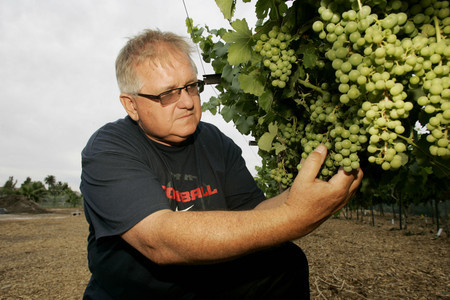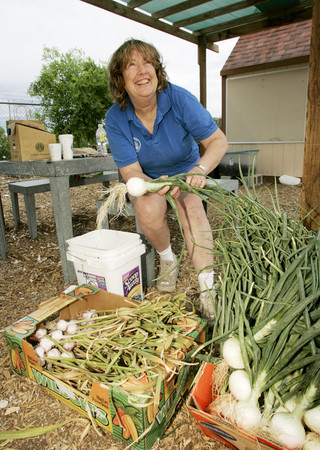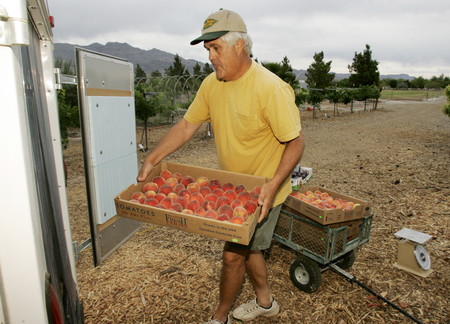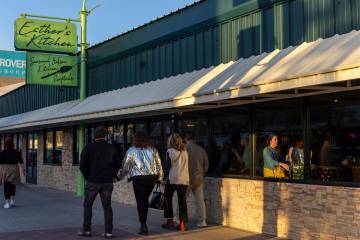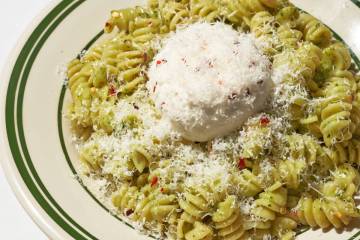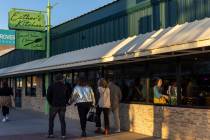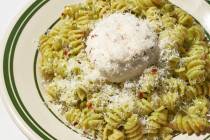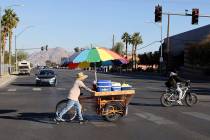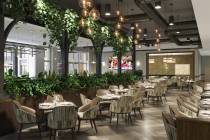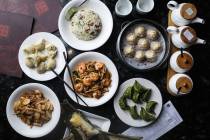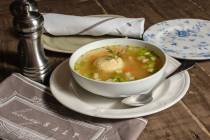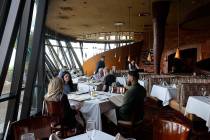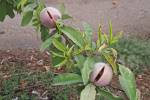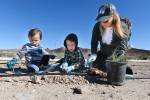Honest-to-Goodness Homegrown
The area near Decatur Boulevard and Horse Road is like many others in the northern part of the valley, with new subdivisions named for other (mostly unlikely) parts of the country leap-frogged by swatches of native desert and a very Las Vegas soundtrack courtesy of manufacturers and operators of heavy equipment.
Except, that is, for a 10-acre patch -- unheralded and virtually unmarked -- that's cut out from the rest. Officially the Center for Urban Horticulture and Water Conservation, it's a facility of the University of Nevada, Las Vegas, where representatives of the University of Nevada Cooperative Extension (based in Reno) work and volunteer as guests, in a joint agreement with the Nevada Board of Regents and the city of North Las Vegas.
If that sounds a little confusing and a lot bureaucratic, here's all you need to know: Whether the verdant swath is an Eden may be debatable, but what's not is that it is a garden, and a very extensive one. Foods of many types -- fruits, vegetables, nuts and, soon, mushrooms -- are growing there, in the hopes that soon they'll be coming to a backyard garden or restaurant kitchen near you.
"The purpose is to see how they perform in this climate, and the best ways to maintain them in this climate," said Bob Morris, area extension horticulture specialist for the University of Nevada Cooperative Extension,
Work at the orchard, as it's commonly called, is closely linked to the slow-food or locavore movement, the philosophy that the food we consume should be produced as close to home as possible. In the Las Vegas Valley that has traditionally been thought of as a tough sell; the vast majority of our "local" produce tends to come from California, Utah or Arizona. But work at the orchard makes it clear that that might not always be the case.
Morris is the man who shepherds the existence of the orchard and its flock of volunteers. After he helped start it in 1997 it was run by volunteers for four years, with Morris returning when, he says, the university "wanted a different focus." Today the staff is Morris, an orchard manager, a part-time delivery person and 50 volunteers.
A walk through it belies the idea that local produce will always be an oxymoron in Las Vegas. Along the mulch-lined main path grow neat rows of wine-grape vines, their bunches hanging heavy. Past the composting piles are garden plots and fruit trees. The 11/2 acres dedicated to vegetables and fruits support 600 trees and vines in 175 to 200 woody varieties. Morris said the orchard's fruit-tree supplier (for which the orchard does research) told him that the plantings are as dense as it's possible for them to be without the use of trellising. In some spots, two or three trees share one planting hole -- usually one early-season variety, one midseason and one late, so they ripen at different times.
There are 15 varieties of wine grapes, 15 of table grapes. Apples, pears, Asian pears, plums, nectarines, peaches, apricots, pomegranates, pluots, almonds and pistachios. Onions, leaf lettuce, chard, peas and beans. Sunflowers. Nopal cactus.
A mushroom house is being built for the production of oyster and straw mushrooms, which don't need conditions as cool and dark as other varieties.
The orchard tested 10 varieties of garlic to see which would do best in our climate; 75 percent, Morris said, "have worked very well."
There always will be, Morris conceded, limitations. The first wine from orchard-grown grapes was produced last year, and while Morris proclaimed it "drinkable," he added, "we're not going to become Sonoma or anything." Grape production is good, he said, but "sometimes happy plants don't make the best fruit." The sugars are extremely high, he said, but acids are too low because of the high light intensity and high night temperatures, neither of which are good for the grapes. Most, he said, are sold to local chefs who use them to make sorbets.
Morris knows that the orchard's single location, colder and windier than most parts of the valley, represents only one of the valley's microclimates, which means that its experiments won't translate everywhere. Because of that, he hopes to establish weather stations in five locations across the valley to do long-term research on microclimates, and hoop houses already are being erected at the orchard to simulate some.
And he has already begun some of that research. Two volunteers have donated their yards -- one downtown, one in the southwestern part of the valley -- for experiments. In 2,000 square feet, 37 fruit trees and vines have been planted and weather stations have been established. The volunteers, both of whom are chefs, will be able to harvest weekly, April through December, in about two years. By planting different varieties, he said, they will, for example, harvest peaches in May, June and August, instead of having a surplus of fruit all at once.
The orchard is self-sustaining, and even more than that, it brings to mind the image of the pig of whom all the parts are used except the squeal. The mulch that covers the ground comes from yard refuse dropped off by a local landscaper (and is free to the public -- with 1,000 pounds distributed last year -- on most mornings, Mondays through Saturdays). The compost is powered by local horse manure.
Bees -- some that are part of a research project, some local -- assist with pollinating. There is a nesting box for barn owls and perches for sparrow hawks, both of which help control the rabbit and gopher populations.
And there are other research projects on the property, including two acres of turf (for water use), palms (ditto) and other ornamentals.
All of which is somewhat symbiotic, especially regarding the issue of water. Before large-scale food production will be able to take place in the valley, Morris said, a policy regarding water use for food products versus ornamentals versus recreation, etc., will need to be hashed out. Other obstacles might include matching supply with demand, and even convincing Las Vegans, increasingly accustomed to low-maintenance yards, to reverse that trend.
But as he gazes across the acres of trees and plants, he seems optimistic.
"The potential for this town to do something is ...," Morris trails off.
But not before spreading his arms wide.
Contact reporter Heidi Knapp Rinella at hrinella@reviewjournal.com or 702-383-0474.



